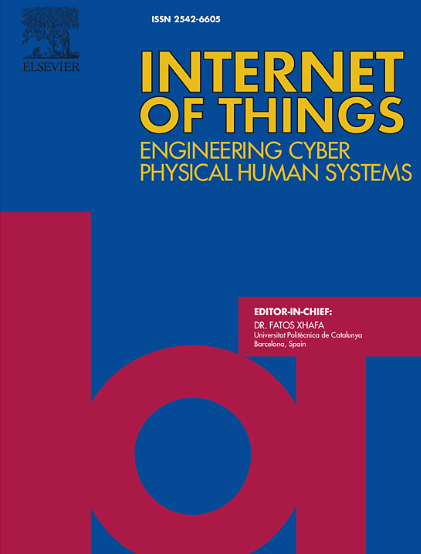Supporting constrained devices and networks in the decentralised Internet of Things
IF 6
3区 计算机科学
Q1 COMPUTER SCIENCE, INFORMATION SYSTEMS
引用次数: 0
Abstract
The ongoing growth of the Internet of Things (IoT) offers great opportunities to improve the way we understand and interact with the physical world. However, existing approaches face a number of challenges from providing scalable and reliable services to users to addressing the need for security and privacy. We believe decentralised architectures offer a valuable alternative to centralised approaches. However, increased performance and communication requirements render existing decentralised technologies unsuitable for use with the constrained edge- and end-devices popular in the IoT. In this paper we address these limitations. First by extending DSF-IoT with a novel mechanism for delegation to enable transparent interactions with and between IoT services on constrained and unconstrained end-devices without the trust and privacy boundaries of existing approaches. Second, delegation is demonstrated through the creation of what we believe to be the first real-world heterogeneous decentralised IoT network spanning WSAN connected microcontrollers, Arm-based single board computers, and unconstrained x64 devices. Third, we qualify DSF-IoT for use on constrained edge-devices through the development of a constrained gateway prototype and test-bench for measuring the performance of IoT brokers under varying operating conditions. This demonstrates that DSF-IoT offers equivalent (or improved) performance to popular CoAP and MQTT brokers on constrained edge-devices while providing historical data storage and access as well as end-to-end trust and privacy. Finally we perform a functional comparison of DSF-IoT against existing protocols and research to highlight the advantages of our approach and the suitability of DSF-IoTs and delegation for use with constrained edge- and end-devices to enable the creation of a truly heterogeneous future decentralised Internet of Things.
求助全文
约1分钟内获得全文
求助全文
来源期刊

Internet of Things
Multiple-
CiteScore
3.60
自引率
5.10%
发文量
115
审稿时长
37 days
期刊介绍:
Internet of Things; Engineering Cyber Physical Human Systems is a comprehensive journal encouraging cross collaboration between researchers, engineers and practitioners in the field of IoT & Cyber Physical Human Systems. The journal offers a unique platform to exchange scientific information on the entire breadth of technology, science, and societal applications of the IoT.
The journal will place a high priority on timely publication, and provide a home for high quality.
Furthermore, IOT is interested in publishing topical Special Issues on any aspect of IOT.
 求助内容:
求助内容: 应助结果提醒方式:
应助结果提醒方式:


